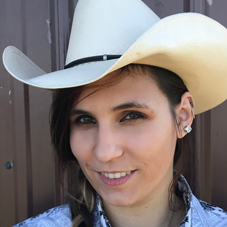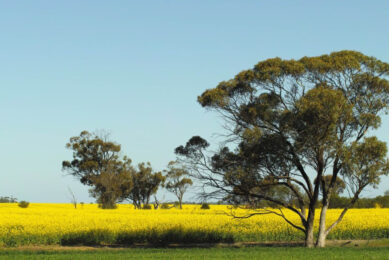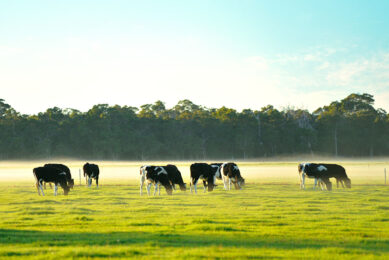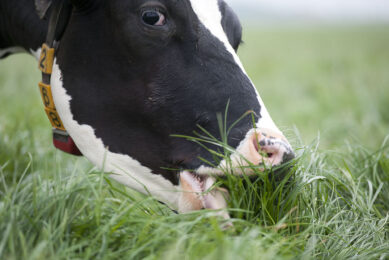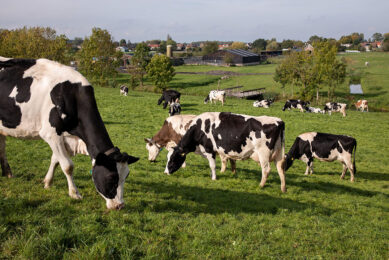Ways to optimise forage management for dairy herds
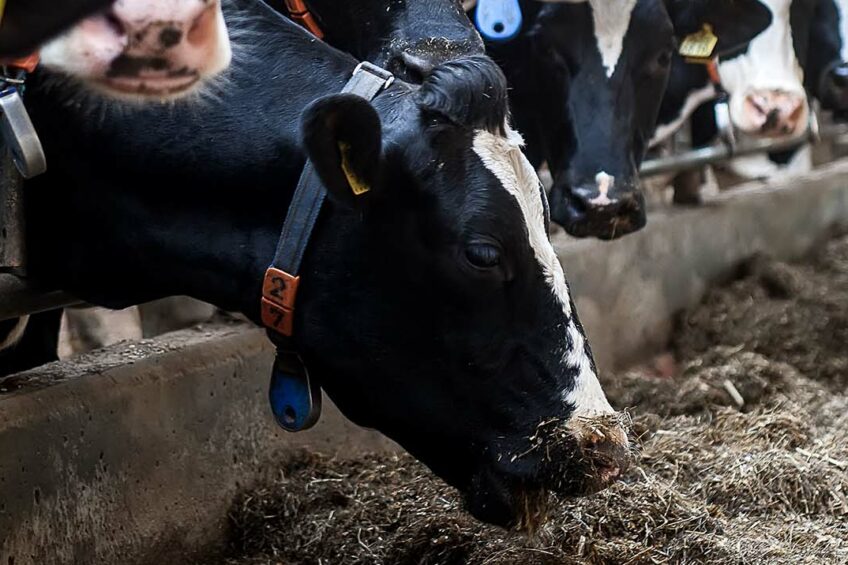
When discussions arise about the ways to save costs for dairy herd management, altering feed and nutrition are almost always mentioned. This is a natural place to look because feed accounts for the biggest chunk of farm expenses. Usually, farms change their rations by looking for certain ingredients they can stop purchasing. But a healthy rumen requires high-quality forage that cannot be cheapened or reduced.
Farmers would benefit from looking internally and determining the best ways to enhance what they already have rather than avoiding a purchase altogether.
Undeniably, farmers the world over are facing more challenges in securing hay and other forages as the planet grapples with widespread drought, transportation delays and other logistical issues. It is more important than ever for dairies to be wise in how they use what they have available and avoid wasting essential nutrients.
Dealing with drought
Forage deficiencies can be compounded by drought, causing shortages that impact animal performance and grazing conditions, leading to overgrazed and unhealthy pastures. In turn, this can lead to increased costs and expenses to restore the pasture or invest in additional forage supplements.
A good relationship with a dairy nutritionist can ensure you are feeding the best forages possible and also help you navigate difficult decisions and circumstances where a low-forage diet might be necessary. In times of scarcity, this expertise is vital to ensure that what you are feeding is both cost effective and will not harm the health of your herd.
Even operations that primarily source their ingredients on-farm by means of pasture, hay and/or silage would benefit from a nutritionist’s oversight and routine testing. Abnormal years and weather conditions can have an impact on the quality of yields and digestibility.
Optimising forage
For farms already growing grains, post-harvest offers a window of opportunity for growing extra forages for grazing or harvest by way of cover crops. Several varieties – including winter wheat, cereal rye, radishes and clover – are hardy enough to withstand the off-season to get sufficient growth for optimal nutrition.
For farms that intend to utilise pasture as late into the season as possible, there may be a benefit to couple it with dry or wet-wrapped bale feeding to avoid overgrazing.
When forages must be harvested, especially in times of scarcity, there should be an emphasis on reaping as much fibre as possible with sufficient length to ensure the cow’s gut functions properly and keeps her healthy. When high forage is not an option, sodium bicarbonate or other salts can be used to keep rumen pH stable when feeding increased grains and other concentrates in the diet.
Reducing waste
Wastage is one of the easiest ways to lose money and nutrients on forage. There are several ways this can happen, including overfeeding, improper storage or mishandling. A good starting point is to evaluate your refusals and see if you can identify patterns or reasons why certain groups are leaving more waste than others.
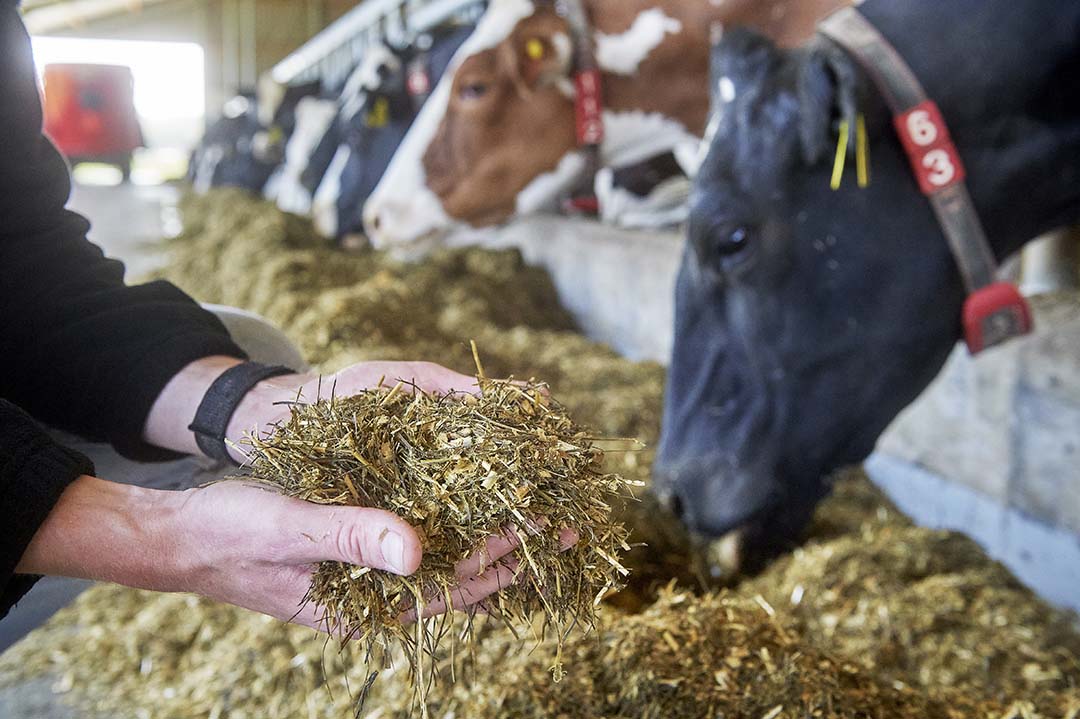
The remedy could be as simple as pushing up feed an extra time each day or improving your feeding system to prevent waste. For example, if your hay feeders are allowing heifers to pull out large mouthfuls and drop the extra on the ground, it may be worth the expense to invest in better equipment. In some cases, if hay is stemmy or unpalatable to some animals you might be able to chop it finer or better incorporate it into the ration.
Don’t be shy about considering how you can utilise your different groups. In some cases, poorer quality or leftover hay can be offered to heifers or dry cows.
Limited resource management
There are other management actions that can be taken to make the most from limited resources. One such management technique is to evaluate your dry-off period. Drying off cows at the best time is a great way to cut back on your higher quality forage needs, as crude protein levels during the dry period are reduced.
An economical way to provide forages for dairy cows is to graze forages instead of harvesting them. As little as 15% to nearly 100% of your forage needs can be provided by grazing, depending on your region and pasture capabilities. These amounts consumed will be greatly dependent on the time of year and conditions, according to Donna M. Amaral-Phillips of the University of Kentucky in her article ‘Manage your grazing system for optimum dairy cow performance’.
Forage management practices should consider what varieties you stock your pasture with and at what times you graze. Plants in a young, vegetative state offer a higher quality but at a lesser volume. Pasture systems should be managed with rotational grazing and adjusted to match the availability of forages, notes Amaral-Phillips. Forage rotation provides a rest period that allows plants to regrow.
Farmers should continually explore ways to enhance their existing forage resources rather than eliminating them entirely, especially during times of uncertainty and economic hardship. Drought-induced forage deficiencies can lead to reduced animal performance, overgrazed pastures and increased expenses, making it crucial for dairy farmers to optimise forage usage.
Collaborating with a nutritionist who knows the individual dairy and circumstances of a particular region can ensure the best forage options and help navigate difficult circumstances where low-forage diets may be necessary. Techniques such as post-harvest forage growth and grazing forages can be used to manage limited resources effectively. The article by Amaral-Phillips underscores the importance of maintaining high-quality forage and offers practical insights for sustainable dairy farming.


